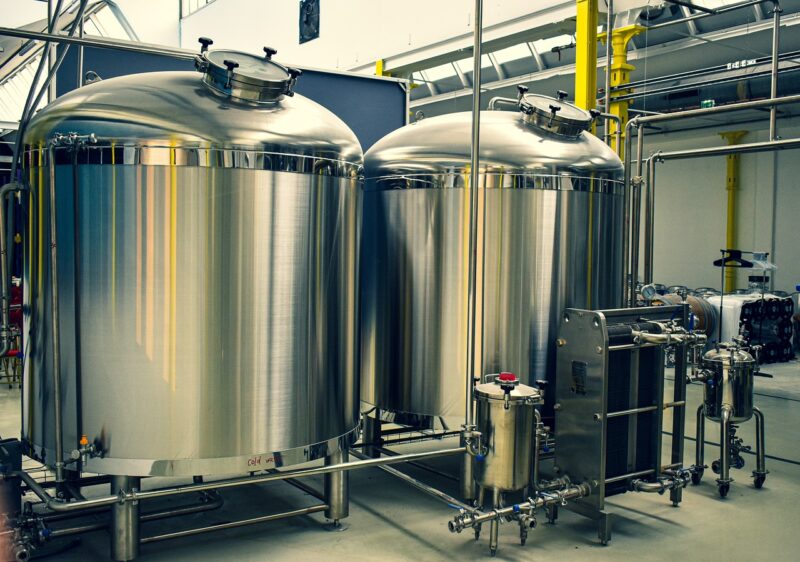When Beer Saved the Day: How Breweries Helped Londoners During the Great Fire of 1666
November 15, 2024

The Great Fire of London in September 1666 remains one of the most cataclysmic events in the history of the city, devastating much of its structure and reshaping its future. However, amid the chaos and destruction, the narrative of resilience unfolds, with breweries playing a surprisingly heroic role in supporting the city’s populace during this devastating catastrophe.
1. A Prelude to Disaster: London before the Great Fire
London in the 17th century was a bustling hub of trade and culture but was also marked by perilous conditions. The city had evolved from a medieval settlement into a sprawling metropolis, filled with timber-framed houses, narrow streets, and overcrowded living quarters, creating an environment ripe for disaster. Buildings were closely packed together, often lacking adequate fire safety measures.
By 1666, the city was at a crossroads, with populations swelling due to an influx of migrants seeking opportunities. The stage was set for catastrophe as the city’s infrastructure failed to keep up with its rapid growth.
2. The Great Fire: Awakening of a City
On September 2, 1666, a small fire ignited in a bakery on Pudding Lane. Despite efforts to extinguish it, strong winds enabled the flames to leap from house to house, engulfing everything in their path. In just a matter of days, the inferno consumed over 13,000 homes, 87 parish churches, and numerous significant buildings, including St. Paul’s Cathedral, leaving about 75,000 citizens homeless.
The fire brought about immense devastation, but amidst the chaos, an unheralded rescue effort emerged—breweries, the very establishments that had sustained London’s working-class culture for generations were now stepping up to aid those in dire need.
3. Breweries: The Unsung Heroes
During the Great Fire, local breweries such as the Anchor Brewhouse, the Three Cranes, and others transformed into makeshift relief stations. As the flames ravaged the city, these breweries took it upon themselves to distribute their beer to the wandering crowds seeking refuge.
• Providing Sustenance: Beer was a staple in the daily diet of Londoners, often safer to drink than water, which was frequently contaminated. Breweries served as crucial points of sustenance amidst the loves of displacement, allowing those affected to nourish themselves, albeit with beer, during a time when food supplies dwindled.
• Ensuring Health and Recovery: Many residents had lost their homes, yet breweries opened their doors to shelter those in need, ensuring that people had a place to stay, and a drink to help ease the distress caused by the calamity. The alcohol not only provided caloric sustenance but also helped calm frayed nerves and fostered community resilience.
• A Spirit of Togetherness: As people gathered in these breweries for a pint, the camaraderie that brewed amid the despair ignited a collective spirit of rebuilding and hope. The act of sharing a drink in the face of adversity reinforced social bonds in a time marked by upheaval.
4. The Aftermath: Rebuilding London
The Great Fire spurred a wave of reconstruction efforts that transformed London’s architecture and urban planning for generations to come. In the immediate aftermath, many skilled workers, including brewers, were key players in the city’s revival. Breweries were not just providers of beer; they became vital for economic recovery, employing many and producing trade goods essential for new constructions.
• Emergence of Fire Safety: The devastation led to significant changes in building regulations, as new laws mandated the use of non-flammable materials and proper street planning to reduce fire risks. Breweries adapted quickly to the changing environment, ensuring their resilience in the face of future urban threats.
• Cultural Significance: Breweries continued to be cradle points for community gatherings, reinforcing their role as social pillars even post-disaster. The narrative of beer as a means of survival and community sustenance became enshrined in London’s cultural memory.
5. Conclusion: More than Just Beer
In retrospect, the Great Fire of London was a transformative event that unveiled the resilience of Londoners. Breweries played not just a role in providing beer but became beacons of hope and unity during tumultuous times. Their ability to adapt and respond to the needs of the community illustrates the power of local businesses to contribute positively to societal recovery, transcending their primary business models.
Today, London’s brewing legacy honors this rich history, serving as a reminder of how, in the darkest moments, the spirit of togetherness, local resilience, and human kindness can rise—one pint at a time.
As we celebrate the contributions of breweries to London’s history, may we also remember the indispensable role of community in overcoming challenges. Who knows—perhaps the next time disaster strikes, it won’t be just any drink in hand, but a pint that helps rally spirits once more.







